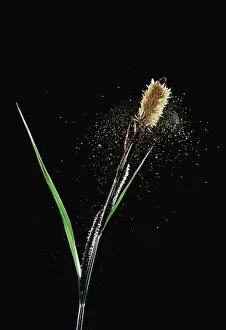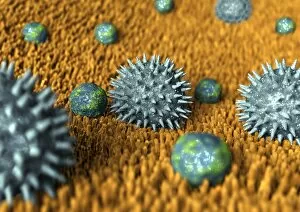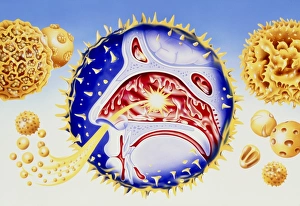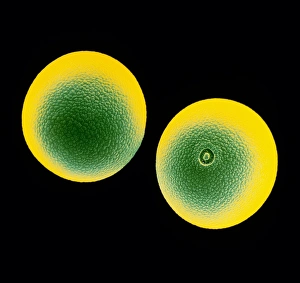Allergic Rhinitis Collection
Allergic rhinitis, commonly known as hay fever, is a condition that affects millions of people worldwide
All Professionally Made to Order for Quick Shipping
Allergic rhinitis, commonly known as hay fever, is a condition that affects millions of people worldwide. It occurs when the immune system overreacts to allergens such as pollen and dust, leading to symptoms like sneezing, itching, runny nose, and congestion. Pollen dispersal plays a significant role in triggering allergic rhinitis. As beautiful as it may appear in artwork representing fields filled with flowers and trees releasing their pollen grains into the air, for those suffering from hay fever, they can be quite distressing. The sight of a young woman amidst this field showcases the struggle she faces due to her allergies. To alleviate the discomfort caused by allergic rhinitis, many turn to Nasonex spray. With its specialized formula designed specifically for allergic rhinitis (C018/2298), this nasal spray provides relief by reducing inflammation in the nasal passages and relieving symptoms associated with hay fever. The intricate artwork depicting pollen and dust highlights how these tiny particles can wreak havoc on sensitive individuals' respiratory systems. When inhaled through the nose or mouth, they trigger an immune response that leads to irritation and swelling within the trachea – beautifully captured under scanning electron microscopy (SEM) images showcasing pollen grains lodged within its walls (Trachea with pollen grains SEM C018/2297). One of the most frustrating aspects is its impact on our sense of smell. The constant congestion often dulls our ability to fully enjoy scents around us – whether it's freshly baked bread or blooming flowers. This loss reminds us just how much we take our senses for granted until they are compromised. Living with allergic rhinitis means constantly battling against a runny nose that seems never-ending. No matter how many tissues we go through or how frequently we blow our noses, relief feels elusive at times. However challenging it may be though; understanding what triggers your allergies is crucial in managing allergic rhinitis effectively.











